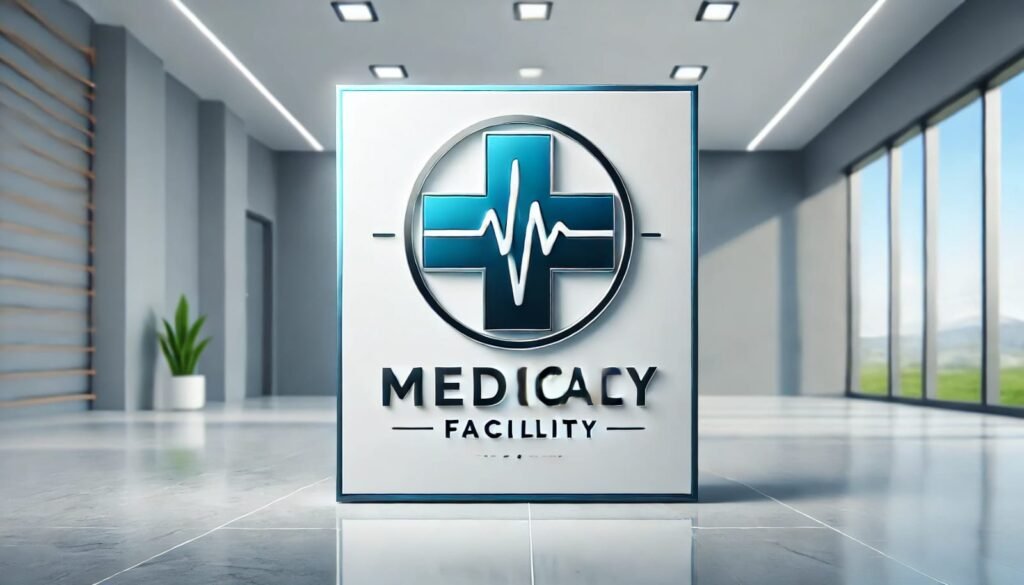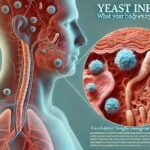The First Aid Mistakes That Could Cost a Life – Are You Making Them?
First aid is the immediate and temporary care provided to an injured or ill person before professional medical help arrives. It plays a crucial role in preventing further harm, reducing pain, and sometimes even saving lives. Understanding first aid techniques can help individuals respond effectively in emergency situations, whether at home, work, or public places. This guide will cover essential first aid concepts, techniques, and procedures in detail.
1. Importance of First Aid
First aid is important because it:
Provides immediate care to prevent worsening of an injury or illness.
Helps in pain management and emotional support.
Prevents infections and complications.
Can save lives in critical situations like cardiac arrest, choking, or severe bleeding.
Enhances safety awareness and preparedness in daily life.
2. Basic Principles of First Aid
When providing first aid, keep these principles in mind:
1. Assess the situation – Ensure the environment is safe for both the victim and the rescuer.
2. Call for help – Dial emergency services (911 in the USA) if necessary.
3. Stay calm and reassure the victim – Your confidence and presence can help prevent panic.
4. Perform necessary aid – Use available resources to stabilize the person’s condition.
5. Do no further harm – Avoid unnecessary movements or unqualified treatments.
3. First Aid Kit Essentials
A well-equipped first aid kit should include:
Bandages – Sterile gauze, adhesive bandages, elastic wraps.
Antiseptics – Alcohol wipes, hydrogen peroxide, antiseptic cream.
Medications – Pain relievers (ibuprofen, acetaminophen), antihistamines, burn cream.
Tools – Scissors, tweezers, thermometer, gloves, CPR mask.
Emergency Items – Flashlight, emergency contact numbers, a first-aid manual.
Having a stocked first aid kit at home, work, and in the car ensures readiness for any situation.
4. CPR (Cardiopulmonary Resuscitation)
CPR is a life-saving technique used when a person’s heart or breathing has stopped.
Steps to Perform CPR:
1. Check responsiveness – Tap the person and ask loudly if they are okay.
2. Call 911 – If there’s no response, get help immediately.
3. Start chest compressions –Place hands in the center of the chest. Push down hard and fast (100-120 compressions per minute).
4. Rescue breaths (if trained) – Give two breaths after every 30 compressions.
5. Continue until help arrives – Do not stop unless the person revives or emergency responders take over.
CPR can double or triple the chances of survival during cardiac arrest.
5. Choking First Aid
Choking occurs when an object blocks the airway, making breathing difficult.
Steps to Help a Choking Victim:
For Conscious Adults and Children:
1. Encourage coughing if they can still breathe.
2. Perform the Heimlich maneuver:
Stand behind the person.
Wrap your arms around their waist.
Apply inward and upward pressure just above the navel.
3. Repeat until the object is expelled.
For Unconscious Victims:
Lay them on their back and begin CPR if necessary.
Quick action can prevent suffocation and save a life.
6. Wound Care and Bleeding Control
Bleeding wounds require immediate attention to prevent excessive blood loss and infection.
Steps to Control Bleeding:
1. Apply direct pressure – Use a clean cloth or bandage to press on the wound.
2. Elevate the injured area – Helps reduce blood flow.
3. Use a tourniquet (if necessary) – Only in severe cases where bleeding won’t stop.
4. Keep the wound clean – Apply antiseptic and cover with a bandage.
Seek medical attention if the wound is deep, won’t stop bleeding, or is infected.
7. Burns and Scalds First Aid
Burns are classified into:
First-degree burns – Red, mild pain (e.g., sunburn).
Second-degree burns – Blisters, severe pain.
Third degree burns – White or charred skin, may not be painful due to nerve damage.
First Aid for Burns:
1. Cool the burn – Hold under cool running water for at least 10 minutes.
2. Cover with a sterile dressing – Avoid applying butter or ointments.
3. Seek medical help – If the burn is severe or covers a large area.
Proper treatment prevents infections and reduces scarring.
8. Fractures and Sprains
Fractures (broken bones) and sprains (ligament injuries) require stabilization.
First Aid for Fractures:
1. Keep the person still – Avoid unnecessary movements.
2. Support the injured area – Use a splint or soft padding.
3. Apply ice packs – Reduces swelling and pain.
4. Seek medical attention – Call 911 for serious fractures.
For sprains, use the RICE method:
Rest – Avoid using the injured part.
Ice – Apply ice packs for 20 minutes.
Compression – Use an elastic bandage.
Elevation – Keep the limb raised above heart level.
9. Poisoning and Overdose First Aid
Poisoning can be caused by chemicals, medications, or food.
What to Do:
1. Call Poison Control (1-800-222-1222 in the USA).
2. Do not induce vomiting unless advised.
3. If inhaled, move the person to fresh air.
4. For skin exposure, wash with water.
5. For suspected drug overdose, administer naloxone if available.
Quick response is critical in preventing severe complications.
10. Heat Stroke and Hypothermia
Heat Stroke First Aid:
1. Move the person to a cool area.
2. Apply cool, wet cloths or a fan.
3. Give small sips of water (if conscious).
4. Seek immediate medical help.
1. Move to a warm place.
2. Remove wet clothing and cover with blankets.
3. Provide warm drinks (not alcohol).
4. Seek medical assistance immediately.
11. Seizures First Aid
Seizures involve involuntary muscle movements and loss of consciousness.
What to Do:
1. Protect the person from injury (remove objects nearby).
2. Do not restrain or put anything in their mouth.
3. Turn them on their side to prevent choking.
4. Time the seizure – If it lasts more than 5 minutes, call 911.
After the seizure, provide reassurance and let them rest.

12. Shock Management
Shock occurs when the body lacks enough blood flow, leading to life-threatening conditions.
First Aid for Shock:
1. Lay the person down and elevate their legs.
2. Keep them warm with a blanket.
* 3. Monitor breathing and pulse.
4. Seek emergency medical help immediately.
Additional 10 Key First Aid Situations and Their Detailed Responses
Beyond the common first aid scenarios, there are several other emergencies where proper knowledge and quick response can prevent severe complications. Here are ten more crucial first aid situations and how to handle them effectively.
1. Drowning First Aid
Drowning is a life-threatening emergency where water obstructs the airway, leading to oxygen deprivation.
What to Do:
1. Ensure your safety first – Do not put yourself at risk. If safe, rescue the person from water.
2. Check for responsiveness – Tap their shoulder and shout their name.
3. If unconscious, start CPR immediately – Follow the chest compression and rescue breath method.
4. If breathing, place them in the recovery position – Turn them on their side to prevent choking.
5. Seek emergency medical help – Even if the person appears okay, secondary drowning
2. Electric Shock First Aid
Electric shocks can cause burns, heart disturbances, or unconsciousness.
What to Do:
1. Do not touch the person directly – Use a wooden stick or non-conductive object to disconnect the power source.
2. Check breathing and pulse – If absent, start CPR immediately.
3. Treat burns – Cool the affected area with water but avoid applying ointments.
4. Seek emergency medical attention – Internal injuries from electricity can be serious.
3. Eye Injury First Aid
Eye injuries can result from chemicals, foreign objects, or blunt trauma.
What to Do:
1. For chemical exposure – Rinse the eye with clean water for at least 15 minutes.
2. For foreign objects – Do not rub the eye; try blinking or flushing it out.
3. For blunt trauma – Apply a cold compress to reduce swelling.
4. Seek medical help – If vision is affected or pain persists.
4. Allergic Reaction (Anaphylaxis) First Aid
Severe allergic reactions can lead to difficulty breathing, swelling, and shock.
What to Do:
1. Identify symptoms – Rapid swelling, difficulty breathing, dizziness, or rash.
2. Use an EpiPen (if available) – Inject into the outer thigh.
3. Call 911 immediately – Anaphylaxis can worsen quickly.
4. Keep the person calm and monitor breathing – Perform CPR if necessary.?
5. Heart Attack First Aid
A heart attack occurs when blood flow to the heart is blocked.
What to Do:
1. Recognize symptoms – Chest pain, shortness of breath, nausea, cold sweats.
2. Call 911 immediately – Delaying can be fatal.
3. Give aspirin (if not allergic) – Helps thin the blood and prevent clotting.
4. Keep the person calm and seated – Reduce strain on the heart.
5. Start CPR if they lose consciousness – Perform chest compressions.
6. Stroke First Aid
A stroke happens when blood supply to the brain is interrupted.
What to Do:
1. Use the FAST method to identify stroke symptoms:
Face drooping
Arm weakness
Speech difficulty
Time to call 911
2. Keep the person comfortable – Do not give food or drinks.
3. Turn them to their side if unconscious – Helps prevent choking.
4. Monitor breathing and pulse – Start CPR if necessary.
7. Snake Bite First Aid
A venomous snake bite can cause severe pain, swelling, and even paralysis.
What to Do:
1. Stay calm and keep the person still – Movement spreads the venom faster.
2. Position the bitten limb below heart level – Slows venom spread.
3. Do not suck the venom or apply ice – These methods can worsen the injury.
4. Call emergency services immediately – Provide details about the snake if possible.
8. Asthma Attack First Aid
An asthma attack restricts airflow and makes breathing difficult.
What to Do:
1. Help the person sit upright – Do not let them lie down.
2. Assist with inhaler use – Administer 2 puffs every 30-60 seconds (up to 10 puffs).
3. Encourage slow, deep breaths – Helps reduce panic.
4. Call 911 if symptoms persist – If there’s no improvement after using the inhaler.
9. Heat Exhaustion First Aid
Heat exhaustion happens due to prolonged exposure to high temperatures, causing dehydration and weakness.
What to Do:
1. Move to a cool, shaded area – Prevent further overheating.
2. Remove excess clothing – Helps cool the body.
3. Hydrate with cool water – Avoid caffeine or alcohol.
4. Apply cold compresses – Use wet cloths or ice packs on the neck and wrists.
5. Seek medical help if symptoms worsen – Dizziness, nausea, or fainting.
10. Carbon Monoxide Poisoning First Aid
Carbon monoxide (CO) is a colorless, odorless gas that can be fatal in high doses.
What to Do:
1. Move the person to fresh air immediately – Away from the toxic environment.
2. Call 911 – Carbon monoxide poisoning requires urgent medical care.
3. Perform CPR if necessary – If the person is unconscious and not breathing.
4. Do not re-enter the area – Wait for emergency responders to clear it.
Conclusion
Being prepared for these additional emergencies can make a significant difference in life-threatening situations. Whether dealing with heat exhaustion, carbon monoxide poisoning, or severe allergic reactions, understanding proper first aid procedures ensures a swift and effective response.
Learning first aid empowers individuals to save lives, reduce injuries, and provide critical care before medical professionals arrive. Stay informed, keep a well-stocked first aid kit, and always prioritize safety in any emergency.



